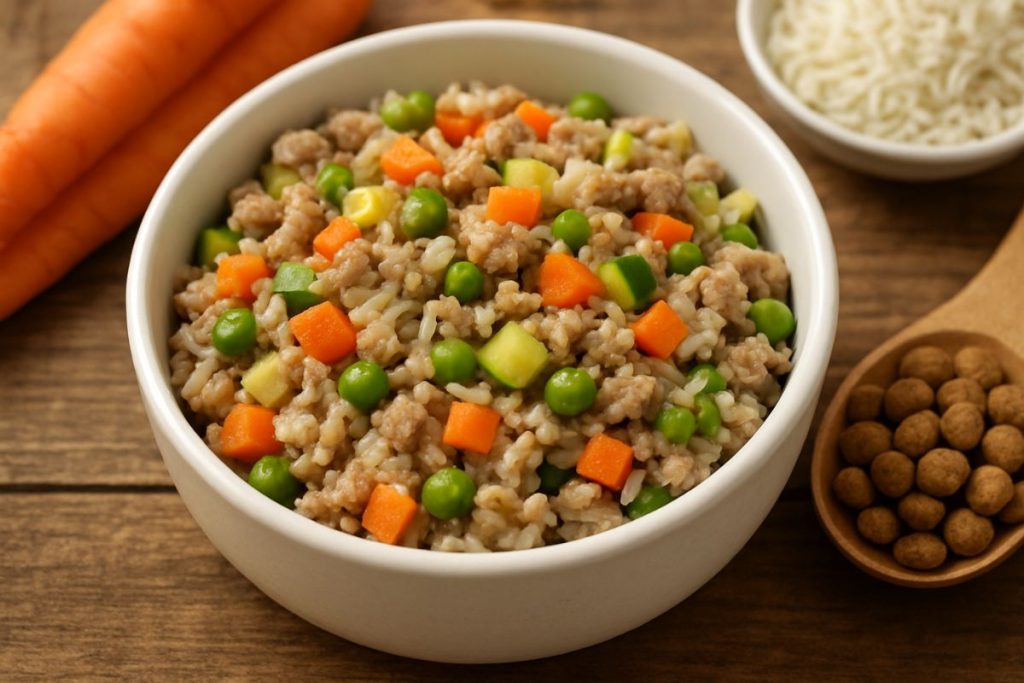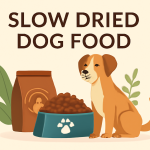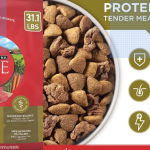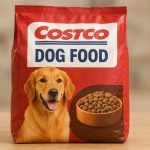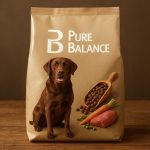Great. I’ll create a 4000-word, SEO-optimized blog post on the topic “Homemade Dog Food: Fresh Recipes for Health.”
The article will:
- Target the primary keyword dog food recipes (strategically placed in the title, introduction, and conclusion).
- Naturally integrate secondary keywords: raw dog food, best dog food for allergies, freshpet dog food, and farmers dog food.
- Follow best practices for keyword density (1–2%) without stuffing.
- Include a compelling meta title and description.
- Use proper heading hierarchy (H1-H3), short paragraphs, and formatting for readability.
- Feature original, informative content with statistics, examples, internal/external links, and FAQs using schema-friendly structure.
- Include at least one optimized image with ALT text and SEO-friendly file name.
- Have strong engagement elements like subheadings, questions, CTAs, and suggestions for social sharing.
I’ll let you know when it’s ready for review.
Meta Title: Dog Food Recipes: Healthy Homemade Meals for Your Pet
Meta Description: Learn balanced homemade dog food recipes using fresh ingredients. Vet-approved tips on nutrition, allergy-safe meals, and food safety for happy, healthy pups.
Homemade Dog Food: Fresh Recipes for Health
Switching to homemade dog food can give your pet a fresher, more nutritious diet tailored to their needs. By preparing your own dog food recipes at home, you control every ingredient and avoid unwanted fillers or preservatives. Many owners value that homemade meals use whole foods – lean meats, vegetables, and grains – with minimal processing. For example, PetMD notes you can select “whole-food ingredients that you would eat yourself” for your dog’s bowl. Homemade feeding can also add variety to mealtime, keeping picky eaters interested.
Despite the appeal of fresh meals, it’s crucial to ensure nutritional balance. Dogs have unique dietary needs – protein, fat, vitamins, and minerals – unlike humans. Always consult your veterinarian or a board-certified pet nutritionist before overhauling your dog’s diet. This article covers the benefits of cooking for your dog, key ingredients to include, practical recipes, and safety tips so you can make healthy dog food recipes that keep your pet thriving.
Why Choose Homemade Dog Food?
Homemade diets have several advantages for dogs and owners. First, you get complete control over ingredients and quality. You can pick fresh, high-quality proteins and veggies, avoiding by-products and additives found in some commercial kibble. You can also tailor meals for your dog’s life stage, weight, or health issues. For example, you can easily lower calories for a dog needing to lose weight or boost protein for a working dog.
Homemade meals tend to be minimally processed. Unlike kibble, which undergoes extrusion or canning, your cooking methods (boiling, baking, steaming) preserve more natural nutrients and flavors. This fresh variety often makes mealtime more exciting for dogs. The American Kennel Club (AKC) points out that you can “formulate [your] own recipes” or choose from many options in a pet recipe app, giving dogs a “host of options to choose from”.
- Nutrient Control: You choose lean, unprocessed meats and whole grains, so you know exactly what your dog is eating.
- Limited Allergens: Homemade diets let you eliminate common allergy triggers (like soy, wheat, or certain meats) by using simple recipes or novel proteins.
- Variety & Palatability: Rotating proteins (chicken one day, beef or fish the next) with different vegetables keeps meals interesting.
- Transparency: You avoid hidden chemicals or low-quality fillers, buying the same quality ingredients you’d choose for yourself.
However, homemade feeding requires care. Studies show that almost all popular home-cooked recipes have nutritional gaps. A Frontiers review warns that DIY diets “require meticulous planning” to meet a dog’s needs. The Dog Aging Project survey found only ~4% of owners feed primarily home-cooked diets, in part because it takes effort to balance nutrition. To reap the benefits and avoid harm, use vet-approved recipes and follow them exactly.
Homemade dog food recipe bowl with diced potatoes and smoked fish for a nutritious dog meal. Using fresh, whole-food ingredients is the foundation of a healthy homemade diet. Dogs require a balance of protein, fat, carbohydrates, fiber, vitamins, and minerals. Here are the essential components to include in your recipes:
- Protein: The most crucial part. Cooked lean meats (chicken, turkey, beef, lamb) and fish are excellent sources of the 10 essential amino acids dogs need. Remove all bones, skin, and excess fat from meats.
- Healthy Fats: Necessary for energy, skin and coat health. Include sources like fish oil (salmon, sardines) or flaxseed oil. A little fat from meat is fine, but too much can cause weight gain.
- Carbohydrates & Fiber: Dogs benefit from digestible carbs and fiber for energy and digestion. Good choices are cooked brown rice, oats, quinoa, sweet potatoes, pumpkin, and veggies like peas or carrots.
- Vitamins & Minerals: Vital for body functions. Provide vegetables and fruits (carrots, spinach, apples) for vitamins, and foods like eggs (B vitamins), liver (iron), or yogurt (calcium). In practice, you often need a calcium supplement (eggshell powder or bone meal) and a multivitamin formulated for dogs to cover all needs. Ensure your recipe includes sources of A, D, E, K vitamins and trace minerals (zinc, selenium) as listed by veterinary nutritionists.
- Water: Homemade food can be low in moisture compared to wet canned diets. Always provide plenty of fresh water; there’s “no dog food that contains enough water for your dog”.
Crafting a balanced meal often means combining these elements. Here are a few simple recipes to try (adjust quantities by your dog’s size and energy needs). Always double-check any new recipe with your vet or a nutritionist:
- Chicken & Brown Rice: Boil skinless chicken breast, shred it, and mix with cooked brown rice and steamed carrots & peas. Add a teaspoon of fish oil for omega-3s. This classic combo supplies lean protein, complex carbs, and veggies.
- Turkey & Sweet Potato: Cook ground turkey and blend with mashed sweet potato and green beans. This novel-protein recipe is gentle on sensitive stomachs. It excludes beef and chicken (common allergens).
- Beef & Veggie Stew: Brown lean ground beef, then simmer with oats and chopped spinach. Stir in a tablespoon of plain pumpkin for fiber. You can also scramble in an egg or add cottage cheese for extra nutrients (in small amounts).
- Fish & Rice Bowl: Bake salmon or whitefish (deboned), flake it, and combine with white or brown rice and steamed zucchini. Fish provides omega-3s; mix in a splash of fish oil to boost fats.
- Mix-ins & Supplements: You can mix in plain yogurt or mashed banana for probiotics and potassium. Sprinkle ground flaxseed or chia seeds for extra fiber. Do not add onions, garlic, grapes, chocolate or any toxins. Always avoid foods unsafe for dogs (chocolate, grapes, onions, raisins, etc. are toxic).
Each recipe above should be followed exactly – substituting or omitting ingredients can unbalance the nutrients. Cooking methods also matter: for example, steaming versus boiling vegetables can alter nutrient content. The AKC notes pet owners often don’t stick to recipes: one study found only 13% of owners remained on the original balanced recipe after a year. Consistency and accuracy are key to meeting your dog’s nutritional requirements.
Raw vs. Cooked Diets
Some homemade diets go a step further by serving raw ingredients (meat, organs, bones), often called BARF (Biologically Appropriate Raw Food). Raw diets aim to mimic what dogs might eat in the wild. Proponents cite potential benefits like cleaner teeth or shinier coats, but there are significant downsides. Raw meats can carry dangerous pathogens. For instance, raw poultry often harbors Salmonella and Campylobacter, and raw meat meals can spread antibiotic-resistant E. coli. These pose health risks to dogs and humans handling the food. Bones can also be hazardous – raw bones can cause choking or punctures if not chosen correctly.
To reduce risks, cook all ingredients thoroughly. The ChefPaw guidelines note that their cooked “paleo” recipes were developed due to the “health risks posed by raw food” (E. coli, Salmonella). Cooking at proper temperatures kills most bacteria. If you still want some raw components, use high-quality, freezer-fresh meats and handle them on a separate cutting board. Always wash surfaces and utensils after raw food prep. Many owners compromise by lightly cooking or using freeze-dried raw foods from reputable brands (ensuring they meet AAFCO nutrient profiles).
Considerations for raw vs. cooked:
- Raw Diet (BARF): Includes raw muscle meat, bone, and organs. Advocates say it’s natural, but studies show raw home diets are often deficient in vitamins A, D, calcium, etc., and high in fat. Without expert formulation, your dog may get too much fat or too little calcium.
- Health Risks: Uncooked ingredients can carry pathogens. The Frontiers review warns that long-term raw diets “predispose dogs to serious pathologies” due to nutrient gaps. Always weigh these risks carefully.
- Safe Cooking: For most homemade dog food, cooking meats (boiling or baking) and soft-cooking vegetables is safest. This ensures pathogens are killed. After cooking, cool food to lukewarm before serving.
- If Using Raw: Only use fresh human-grade meat; consider pre-freezing to kill parasites. Include both muscle and organ meats for nutrients, and add a calcium source to balance bones. Use raw bones with caution and under supervision.
Managing Allergies and Special Diets
Food allergies or intolerances (though relatively rare in dogs) are another reason owners turn to homemade diets. Only about 0.2% of dogs have true food allergies. The most common triggers are proteins like chicken, beef, dairy, or grains like wheat and soy. If your vet suspects a food allergy, a homemade elimination diet can help pinpoint the culprit.
The advantage of cooking at home is full ingredient transparency. For a dog with allergies, you can use a single novel protein (one your dog has never eaten) and a limited number of other ingredients. For example, venison & pumpkin or lamb & peas are uncommon choices that may be well-tolerated. ChefPaw’s “Gordon’s Grub” recipe, for instance, uses turkey and avoids all common allergens. Always avoid any ingredient your dog has reacted to.
If allergies are severe, work closely with your vet. They may recommend a prescription hydrolyzed diet or supervised home diet. Never guess – a small tolerance can still trigger symptoms. Once you have a safe recipe, it can become one of the best dog food for allergies by providing nutrition without the offending foods. In bullet form, here are tips for an allergy-friendly homemade diet:
- Use novel proteins: Try turkey, rabbit, venison, or duck.
- Avoid fillers: Skip grains or legumes if those are suspected triggers. Use vegetables like carrots or pumpkin for carbs.
- Add digestive aids: Incorporate a teaspoon of plain yogurt for probiotics or bromelain (pineapple enzyme) for digestion.
- Monitor reactions: Watch for itchy skin or digestive upset when trying a new recipe. If symptoms recur, consult your vet and try a different protein.
Fresh-Dog Food Services (Freshpet, Farmers Dog)
If cooking every day isn’t feasible, there are fresh dog food companies that make balanced meals in a kitchen. Freshpet is one popular brand — it sells refrigerated rolls and meals made with high-quality meats and produce. (Freshpet’s labels state all meat is “100% farm-raised”.) Another is The Farmer’s Dog, a delivery service providing pre-portioned human-grade meals customized for your dog.
These services formulate diets under expert guidance, so the nutrition is sound. A recent report notes The Farmer’s Dog even invests in vet research to validate its diets. The convenience is high, but these products come at a premium price. If you choose a branded fresh food, read the ingredient list and feeding guidelines carefully. Some owners mix homemade and Freshpet or Farmer’s Dog meals (for example, 50/50 mix) as a gradual transition. Always introduce any new food slowly to avoid tummy upset.
Food Safety and Feeding Tips
When preparing homemade meals, prioritize safety:
- No Harmful Foods: Never include toxic ingredients. Chocolate, grapes/raisins, onions, garlic, macadamia nuts, and anything with xylitol (an artificial sweetener) can cause serious illness or death. Even small amounts can be dangerous, so double-check every item.
- Proper Cooking: Wash your hands and surfaces after handling raw meat. Cook all animal proteins to at least 165°F to kill bacteria. Do not season dog food with salt, spices, or sauces – dogs are sensitive to these.
- Bone Safety: If you use bones, never feed cooked bones (they splinter). Raw bones (large beef or pork bones) can be given occasionally under supervision to help clean teeth. Or use crushed bone meal powder for calcium.
- Clean Storage: Refrigerate fresh dog meals within 2 hours of cooking. Use refrigerated food within 2–3 days. You can freeze portions (in ice-cube trays or bags) and thaw in the fridge. Discard any food left out over 2 hours, especially in warm weather. Proper storage prevents mold and bacterial growth.
- Portion Control: Monitor your dog’s weight. As a general rule, adults eat about 2–3% of their body weight per day (e.g. a 50-lb dog ~1–1.5 lbs of food). Adjust up or down for activity level, age, and body condition. Puppies and very active dogs may need more calories. Overfeeding can lead to obesity, so measure meals carefully.
- Hydration: Always keep fresh water available. Since homemade meals may be lower in moisture than canned food, hydration is crucial.
Following these tips will help avoid common mistakes. A 2025 review emphasizes that even with the best intentions, many owners create “superficially balanced” diets that lack critical nutrients. Veterinary experts advise making any large diet changes under professional guidance.
Encouraging Your Dog and Engaging with Others
Let your dog help taste-test (safely) and observe which ingredients they love. A happy wag at mealtime means you’re onto a winning recipe! Remember to take photos of your pup with their homemade meals – sharing on social media can inspire other dog owners. Don’t hesitate to ask for feedback or tips in pet-owner forums. We welcome comments below – share your favorite recipe or ask questions. If you try one of these recipes, let us know how your dog liked it!
Conclusion: Healthy dog food recipes start with fresh, whole ingredients and careful planning. When done right, homemade diets give your pet quality nutrition and variety. The key takeaway is balance and safety: follow vetted recipes, cover all food groups, and avoid toxins. Consult your veterinarian or a board-certified nutritionist to formulate recipes tailored to your dog’s age, weight, and health status. With attention to nutrition and hygiene, cooking for your dog can be a rewarding way to improve their health and happiness. Try one of the above homemade dog food recipes and watch your dog thrive on fresh, wholesome meals!
FAQ
- Q: Are homemade dog food recipes healthy for my dog?
A: When properly balanced, homemade diets can be very healthy and appealing. They let you use fresh, high-quality ingredients and avoid allergens. However, many homemade recipes lack essential nutrients. Experts advise using veterinarian-approved recipes or working with a canine nutritionist to ensure completeness. Always compare any homemade diet against AAFCO nutrient profiles to meet your dog’s needs. - Q: How do I transition my dog to homemade food?
A: Switch gradually over 7–10 days by mixing increasing amounts of homemade food with the old food. For example, start with 25% new diet and 75% old for a few days, then 50/50, then 75/25, before going fully homemade. This gradual change helps prevent diarrhea or vomiting. Monitor your dog’s stool and energy; if any issue arises, slow down the transition. - Q: What ingredients should I include in dog food recipes?
A: Key ingredients include a high-quality protein (chicken, turkey, beef, lamb, or fish) plus digestible carbohydrates (brown rice, sweet potatoes, oats) and vegetables (carrots, peas, pumpkin). Add healthy fats (like fish oil or flaxseed oil) and a calcium source (eggshell powder or supplement). A multivitamin/mineral supplement for dogs is often recommended to cover all vitamins and minerals. Use balanced recipe guidelines to ensure you include all essential nutrients. - Q: Can homemade dog food help with food allergies?
A: Yes. Homemade diets allow you to eliminate known allergens and use novel ingredients. For example, using only turkey or lamb avoids common allergens (chicken, beef). A limited-ingredient diet with one protein and one carb can ease allergy symptoms. Work with your vet to identify the allergen and craft a simplified recipe that excludes that ingredient. - Q: How should I store homemade dog food?
A: Refrigerate freshly cooked meals and use them within 2–3 days. You can also freeze portions (in ice trays or containers) and thaw overnight when needed. Always cool food before refrigerating, and never re-freeze after thawing. Heated food should be served lukewarm, not hot. Discard any food left out for over 2 hours to avoid bacterial growth. - Q: What about Freshpet or The Farmer’s Dog products?
A: Freshpet and The Farmer’s Dog are companies offering pre-made fresh meals. Freshpet dog food is refrigerated and made with farm-raised meats. The Farmer’s Dog delivers human-grade, vet-formulated meals to your door. These can be convenient, balanced alternatives if you’re too busy to cook. However, they are more expensive than cooking yourself. Always check the label for ingredients and feeding instructions, and transition gradually if switching brands.
By following these guidelines and tips, you can create nutritious homemade meals that keep your dog healthy, happy, and excited for dinner!

